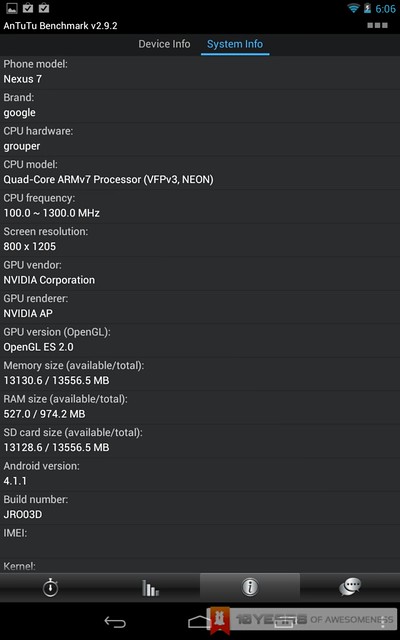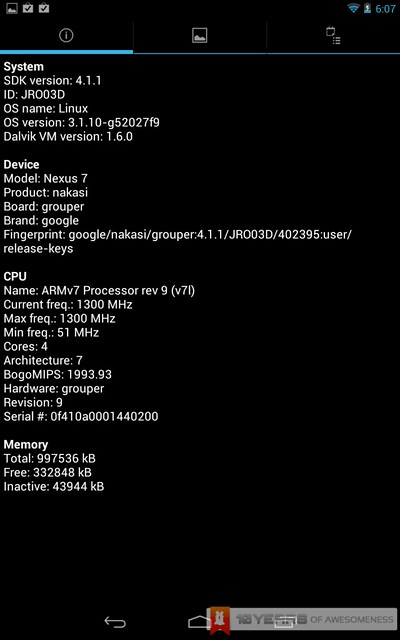Android to be reckoned with

Samsung's follow up to its popular Galaxy Note is bigger, badder and better.
By DONOVAN QUEK
When Samsung first announced the Galaxy Note last year, it received mixed responses. With a screen that was 5.5in big, it was far bigger than a conventional smartphone and too small to be considered a tablet.
Fast forward one year, and the Note is a commercial success, having sold over 10 million units worldwide and garnering a huge fan-base as one of the most popular "phablets" (phone/tablet hybrid) to ever hit the market.
Samsung wasted no time in coming up with a successor, and here we have the Galaxy Note 2 - an even faster, stronger, and bigger device than its predecessor.
Oversized phone or undersized tablet?
The 5.5in Super AMOLED screen is impressive with excellent colour and good viewing angles.
For a device with a screen that is bigger than the oversized Note, the Note 2 surprisingly fits better in the hand. This is because it is taller than the Note but the width is smaller, thus making it easier for the hand to grasp.
At 183g, it is considerably light for a phone of such gigantic proportions. However, it is still heavier than an average phone and some might feel tired after prolonged use of the Note 2.
For a device that is priced above RM2,000, the plastic build quality of the Note 2 is a turn off. However, looking beyond the materials used, the device feels solid.
It comes with a 1.6GHz Cortex A9 quad-core processor along with a whopping 2GB RAM. With that much horsepower, along with the latest version of Android 4.1 Jellybean, the user interface is buttery smooth.
With Jellybean, Google aimed to eliminate lag and the results can be seen with the Note 2. Connectivity options include WiFi 802.11 a/b/g/n, Bluetooth 4.0, and micro USB. NFC (near field communication) is also available, which allows huge amounts of data to be transferred just by touching the Note 2 with other NFC enabled devices.
The 16GB of internal memory that the Note 2 comes with is enough for an average user but for those who prefer more space, there is a microSD slot that can handle up to 64GB more of memory.
If there is one area where the Note 2 truly impresses, it will be in the battery department. Sporting a 3,100mAh battery, it is second only to Motorola's Razr Maxx's 3,300mAh.
Unlike most smartphones in the market today which require charging every now and then, it can last over a day of moderate usage while being connected to 3G at all times.
This is a huge improvement over the other star that Samsung released earlier this year, the S3.
For those who are worried that the Note 2 is too big to be used for messaging with one hand, there is the one-handed operation mode.
This moves the keyboard to the side of the phone, depending on whether you're left or right handed. One thing that we weren't pleased about was that it is hard to reach the two soft keys beside the home button when using the Note 2 with one hand.
 rear view.
rear view.
Multimedia powerhouse
The Note 2 boasts an 8-megapixel rear camera that takes shots with almost zero shutter lag. Pictures taken are decent enough as they appear crisp and clear on the screen.
The video camera records high definition videos up to 1080p. It also has the ability to capture pictures at almost full resolution while recording videos. This feature works as advertised, and doesn't affect the quality of the video as video playback quality was excellent.
One thing that benefits greatly from the large screen is the gallery, as there is enough space on the left of the screen for a list of the albums to be displayed. This makes it easy to skip from album to album and also makes it convenient when moving files from one place to another.
 NICE: The Note 2 has a video camera that records high definition videos up to 1080p and the ability to capture pictures at almost full resolution while recording videos.
NICE: The Note 2 has a video camera that records high definition videos up to 1080p and the ability to capture pictures at almost full resolution while recording videos.
The Note 2 comes with video pop up play feature, which allows videos to be minimised and moved around the screen so that the users can multitask.
Similarly, there is also the Internet pop up, which is a mini Internet browser that works the same way as a video pop up. Very handy in situations such as when you are browsing Facebook and want to explore a link.
Improved S Pen
ONE of the main features of the Note is its stylus. Dubbed the S Pen, it is no ordinary stylus - a function button on the stylus allows it to conjure up a list of cool tricks.
Being the third device in the Note series after the original Note and the Note 10.1 tablet, it has an S Pen with a new design.
It is longer and shaped more like a pen compared to the original, thus making it more ergonomic to hold. Thanks to popular graphics tablet maker Wacom's digitiser technology and the S Pen's 1,024 pressure points, the more pressure you apply when using the stylus, the thicker the lines will appear.
The S Note app is also a signature of the Note series. There are a number of new additions such as shape match and formula match.
With shape match, any shapes that are drawn out will be corrected to be as geometrically perfect as possible while with formula match, users can write out any mathematical equations and the system will use the Wolfram Alpha search engine to give the answers.
There is also a pop up S Note, which is a much condensed version of the app. This can be very useful at any point in time when notes need to be taken, especially during a telephone conversation and a message needs to be written down.
 USEFUL: The S pen has a function button on the stylus that allows it to conjure up a list of cool tricks.
USEFUL: The S pen has a function button on the stylus that allows it to conjure up a list of cool tricks.
Another innovative use of the S Pen is gestures, whereby swiping up with the sytlus and the function button pressed brings up a quick command page. From here, you just have to write out predetermined gestures like @ followed by the name of someone in your contacts list and you will be directed to composing an e-mail to the person.
Aside from the long list of predetermined gestures, you can also create your own gestures and assign it to any settings or apps of your choice, thus opening up a huge window of possibilities.
A neat trick that has been added is Air View - if you hover the S Pen a few millimeters away from the screen, a pointer will appear, just like a mouse cursor.
This opens up an array of functions, such as hovering above albums and videos to catch previews of them. There are websites which require the mouse cursor to be moved over certain objects for menus to pop out, and this can be done on the Note 2's browser. It also works well as a guide for better precision when writing or drawing.
Samsung has also introduced the S Pen Keeper feature which will notify users when the S Pen is detached and moved away from the Note 2. This is an innovative move to help prevent misplacing the pen but it didn't work all the time during our tests.
One of the more useful things about the Note 2 is the Multi Window feature. Users have the ability to open up to two different apps at the same time and have them both sharing the screen. It works smoothly without any lag, with the only downside being that only a handful of apps are supported by this feature.
Commonly used apps like the Internet browser, Facebook, Youtube and Maps apps work with this feature.
There was an instance when I was with a kid who really wanted to watch some Sesame Street videos on YouTube while I wanted to browse the Internet, and Multi Window helped to make it a win-win situation by allowing both to be done at the same time.
Smart Rotation is another innovative addition. The reviewer tends to use the phone while lying down and the auto rotation always gets in the way, rotating even when it isn't intended to.
The only solution before this was to disable the auto rotation but now with Smart Rotation, the front camera acts as a sensor to detect the orientation of the user's eyes, and rotates accordingly. This does work, but requires sufficient lighting for the camera to detect the eyes.
 EASY ON THE EYE: Web browsing was less strenuous for Quek thanks to the large 5.5in screen.
EASY ON THE EYE: Web browsing was less strenuous for Quek thanks to the large 5.5in screen.
Similarly, the eye detection is also used so that the screen doesn't dim while the user is looking at it through a feature called Smart Stay.
Final note
With a predecessor that managed to defy early criticism and gain worldwide popularity, the Note 2 was announced to much fanfare. Does it live up to the high expectations? We have to answer that with a resounding yes.
With 2GB RAM coupled with quad-cores and Android Jellybean, the Note 2 is one of the smoothest devices in the mobile market now.
It is unfair to penalise the Note 2 for being big. One of the main reasons most users get attracted to the Note 2 is because of the big screen. Penalising the Note 2 for being large is akin to someone buying a Hummer and complaining that it is too big.
Having said that, the market for phablets isn't as matured as that for conventional smartphones, and some will not be willing to carry such a big device. But for those who don't mind a device that is not only big in performance but also in size, then the Note 2 is definitely one of the better choices in the market at the moment.
Pros: Multi Window; impressive battery life; improved S Pen and S Note; OS runs smooth thanks to fast processor and lots of memory.
Cons: May be too big for most people's liking; a little plasticky.
Galaxy Note 2 (GT-N7100)
(Samsung)
Android 4.1 (Jellybean)
Processor: 1.6GHz Cortex A9 quad-core processor
Network: GSM 850/900/1800/1900, HSDPA 850/900/1900/2100
Camera: 8-megapixel with LED flash (back), 1.9-megapixel (front)
Display: 5.5in (1,280 x 720-pixels) Super AMOLED touchscreen
Memory: 16GB Internal memory, microSD slot (up to 64GB), 2GB RAM
Connectivity: Bluetooth 4.0, USB 2.0, WiFi 802.11 a/b/g/n, NFC
Features: Multiscreen, Smart Stay, Smart Rotation, S-Voice, Air view, 1080p full HD video recording and playback, stylus (S Pen)
Battery: 3,100mAh lithium-on
Size: 151.1 x 80.5 x 9.4mm
Weight: 183g
Price: RM2,299
Rating: 4.5 stars
Review unit courtesy of Samsung Malaysia Electronics, 1-800-88-9999
(Samsung)
Android 4.1 (Jellybean)
Processor: 1.6GHz Cortex A9 quad-core processor
Network: GSM 850/900/1800/1900, HSDPA 850/900/1900/2100
Camera: 8-megapixel with LED flash (back), 1.9-megapixel (front)
Display: 5.5in (1,280 x 720-pixels) Super AMOLED touchscreen
Memory: 16GB Internal memory, microSD slot (up to 64GB), 2GB RAM
Connectivity: Bluetooth 4.0, USB 2.0, WiFi 802.11 a/b/g/n, NFC
Features: Multiscreen, Smart Stay, Smart Rotation, S-Voice, Air view, 1080p full HD video recording and playback, stylus (S Pen)
Battery: 3,100mAh lithium-on
Size: 151.1 x 80.5 x 9.4mm
Weight: 183g
Price: RM2,299
Rating: 4.5 stars
Review unit courtesy of Samsung Malaysia Electronics, 1-800-88-9999
QUICK SPECS
- Donovan Quek (The Star)















